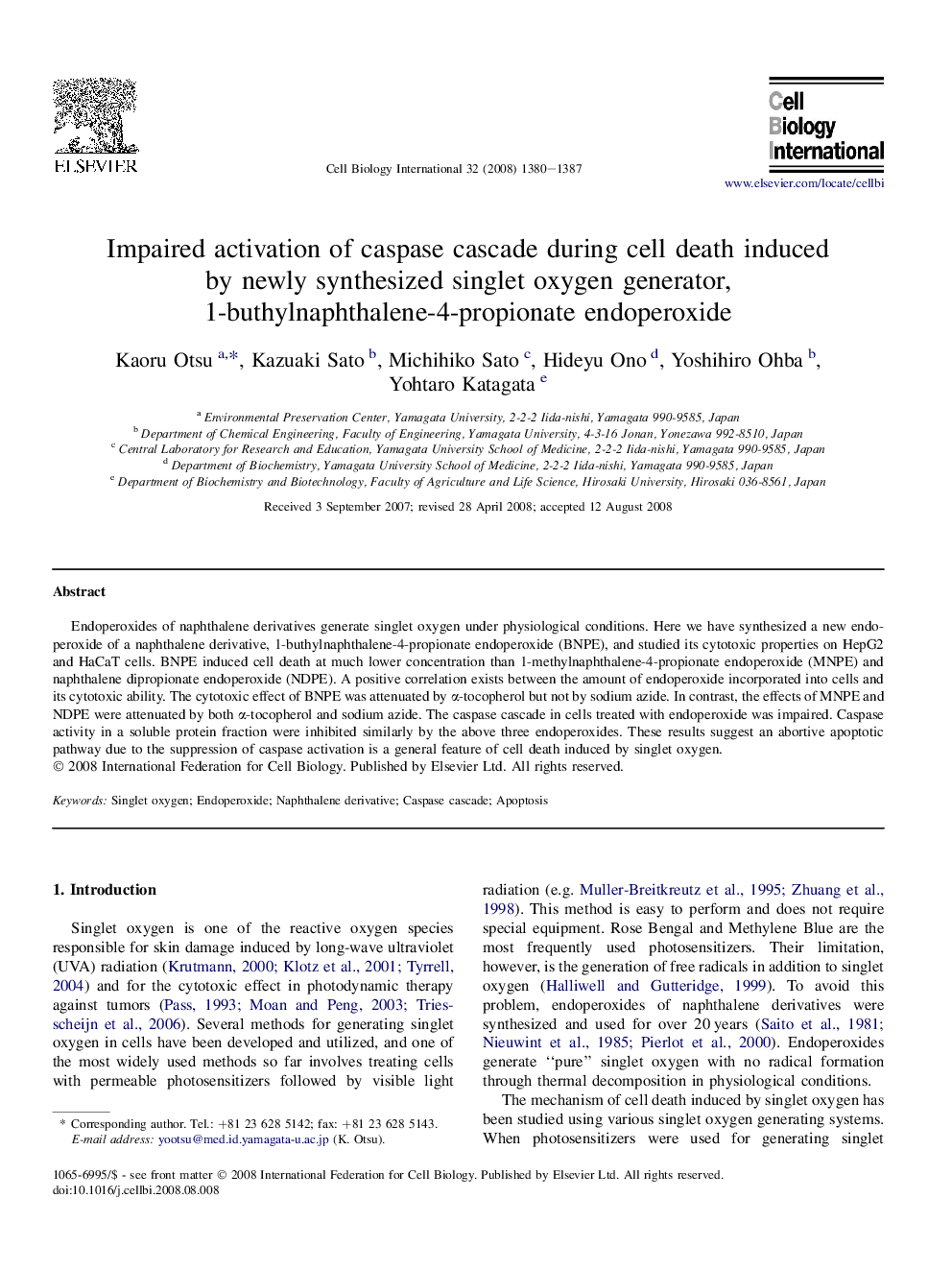| Article ID | Journal | Published Year | Pages | File Type |
|---|---|---|---|---|
| 2067284 | Cell Biology International | 2008 | 8 Pages |
Abstract
Endoperoxides of naphthalene derivatives generate singlet oxygen under physiological conditions. Here we have synthesized a new endoperoxide of a naphthalene derivative, 1-buthylnaphthalene-4-propionate endoperoxide (BNPE), and studied its cytotoxic properties on HepG2 and HaCaT cells. BNPE induced cell death at much lower concentration than 1-methylnaphthalene-4-propionate endoperoxide (MNPE) and naphthalene dipropionate endoperoxide (NDPE). A positive correlation exists between the amount of endoperoxide incorporated into cells and its cytotoxic ability. The cytotoxic effect of BNPE was attenuated by α-tocopherol but not by sodium azide. In contrast, the effects of MNPE and NDPE were attenuated by both α-tocopherol and sodium azide. The caspase cascade in cells treated with endoperoxide was impaired. Caspase activity in a soluble protein fraction were inhibited similarly by the above three endoperoxides. These results suggest an abortive apoptotic pathway due to the suppression of caspase activation is a general feature of cell death induced by singlet oxygen.
Related Topics
Life Sciences
Biochemistry, Genetics and Molecular Biology
Biophysics
Authors
Kaoru Otsu, Kazuaki Sato, Michihiko Sato, Hideyu Ono, Yoshihiro Ohba, Yohtaro Katagata,
